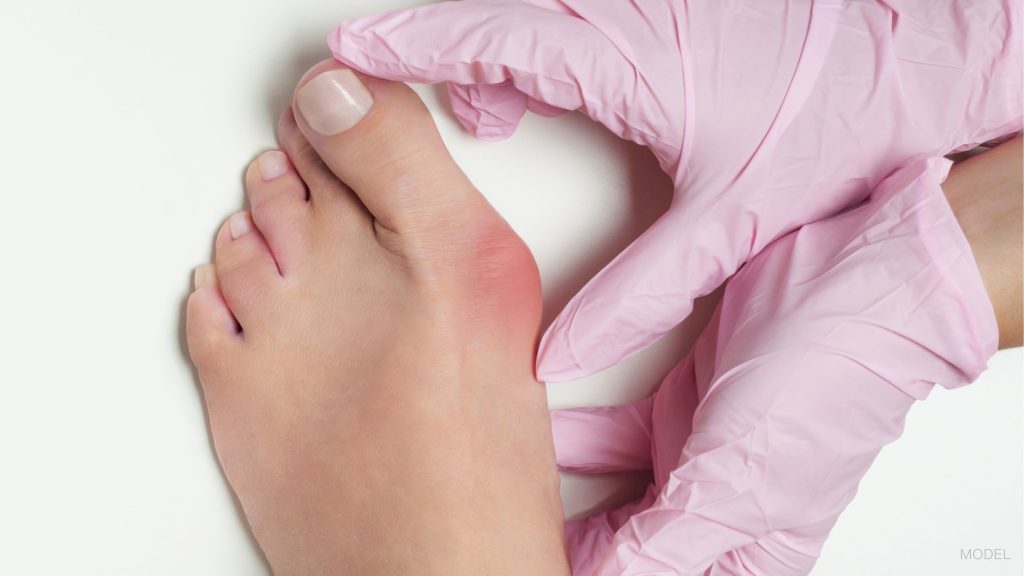If you’re considering bunion surgery, you probably already know that a bunion is typically a large, protruding bump on the outer side of the big toe. Bunions can cause inflammation, swelling, and soreness—although not all bunions are painful, they are often unsightly and can make it difficult to wear the shoes we love.
While the word bunion is commonly used by most patients, your doctor may use the term “hallux valgus,” which is just the scientific medical term for bunion.
What Causes Bunions?
Bunions occur when the big toe angles in towards the smaller toes, overlapping or bumping into the adjacent toe or toes. A bony prominence called a bunion develops on the outer side of the big toe when the joint at the base of the big toe becomes misaligned. This angling of the big toe often results from footwear, but it can also result from a congenital condition.
Over time, a bulging bunion can put pressure on the joint and wear down cartilage, making it painful to walk and move about normally.
Minimally Invasive Chevron and Akin Surgery (MICA) Bunion Treatment
An orthopaedic cosmetic procedure, bunion surgery is now offered at Surgical Solutions Network. Minimally invasive chevron and akin (MICA) is another option available for correction of mild to moderate big toe deformity and is ideal for bunions.
Are You Ready for MICA Surgery?
If you struggle from:
- Foot pain that significantly limits activities of daily life and experience difficulty walking more than a few blocks without significant pain
- Chronic inflammation and swelling that does not improve with rest and medications
- Toe deformity or drifting of the big toe toward the smaller ones, creating the potential for toes to cross over each other (“the crossover toe”)
- Stiffness with the inability to bend and straighten the big toe
- Failure to obtain pain relief with changes in footwear
During your consultation, our surgeon will review your bilateral standing x-rays with you and advise on the best treatment option for your type of bunion deformity. We will answer your questions and address any concerns during your consultation. There is no need for a referral from a family doctor as this is a private cosmetic orthopaedic procedure.
What are the Benefits of MICA Bunion Surgery?
MICA can help relieve bunion pain and allow most patients to be active and enjoy life again, including the comfort of being able to wear their favourite shoes again. Typically, after treatment, the foot looks better, and cosmetically, the scarring is minimal. You can learn more about whether the bunion surgery is worth it in our related blog post.
What is MICA Bunion Surgery Recovery Like?
When compared to traditional bunion surgery, MICA offers quicker recovery with minimal scarring. Patients who have undergone this minimally invasive surgery are usually able to walk within 2 days after the procedure. In contrast, those who have had traditional bunion surgery must wait for the fusion to occur and are required to be non-weight-bearing on the affected foot for 4 to 6 weeks.
MICA patients typically report less pain and swelling, and many have been able to get back on track with their lives much sooner than expected. In one study, 87% of patients were satisfied with the results of the procedure. The key is to follow the postoperative instructions provided by the surgeon.
Discuss Your Bunion Correction Options
MICA is an innovative, technologically advanced cosmetic orthopaedic procedure that offers patients a choice from traditional bunion surgery. Imagine getting back to your favourite activities in as little as 2 days after surgery. Contact us to book your consultation today!
